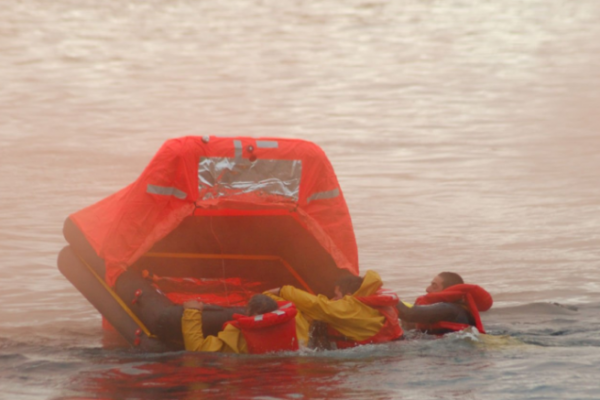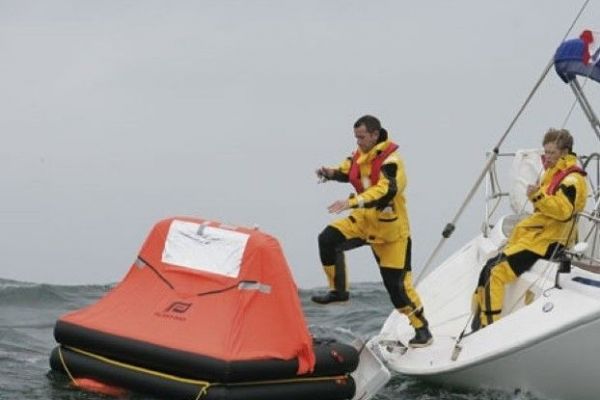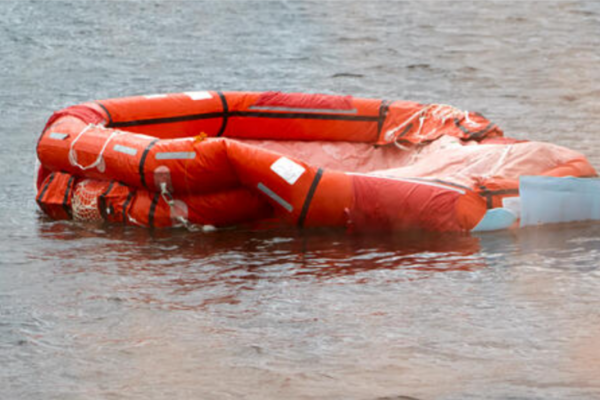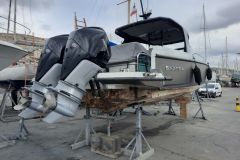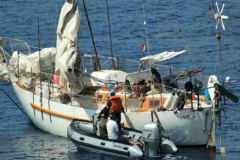When a boat is in distress and it's time to hit the liferaft, stress and panic can set in. At such times, it's vital to know exactly what to do.
Colloquially known as a "bib", the liferaft is an imposing, cumbersome device, weighing between 23 and 43 kg. Whether stowed in a locker or moored on deck, it is often scrutinized with some trepidation by the crew, torn between the hope of never having to use it, and the relief of having it close at hand, with one big question still unanswered: when to use it and how to open it? We take stock, so you know what to expect when you need it.
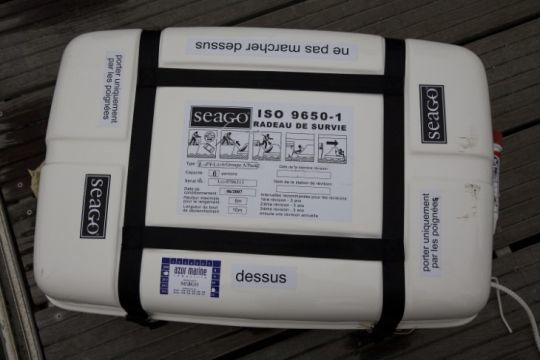
Steps to follow in the event of absolute distress on board
1. Check the boat's buoyancy: height of freeboard, height of water inside.
2. Depending on the situation, a MAYDAY call is broadcast or triggered on the VHF DSC. The distress beacon is activated.
3. Each crew member is equipped with an individual lifejacket. If you have one, put on a survival suit first.
4. Remove the undeployed raft to the deck.
5. Securely fasten the protruding strap to a solid, easily accessible point. This is the percussion hump. It must be at least 10 meters long.
6. Give each crew member a specific mission, including collecting items, food and warm clothing that may be useful for your survival, and lock them in a "safe place" grab-bag watertight and ready to ship.
7. Set the boat's battery switch to the off position to avoid a short-circuit.
8. Tip the container or bag directly into the water, to leeward of the boat (do not cut the straps, they are designed to give way automatically). The raft will float while the strap unwinds and tightens. Pull firmly on the percussion line. This inflates the liferaft.
9. The raft floats close to the boat in difficulty. Keep it at a distance so that it doesn't rake, snag or get under the boat's hull, until it's time to board.
10. The dinghy can also be launched.
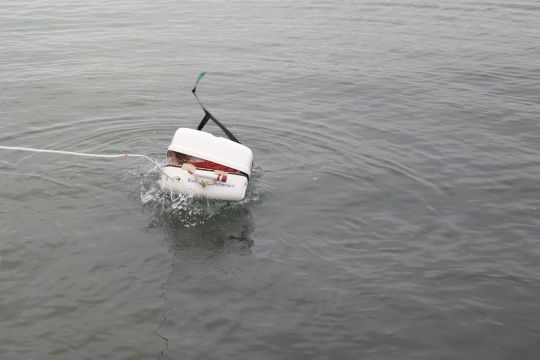
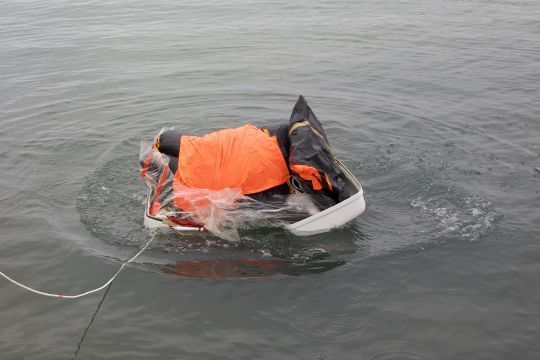
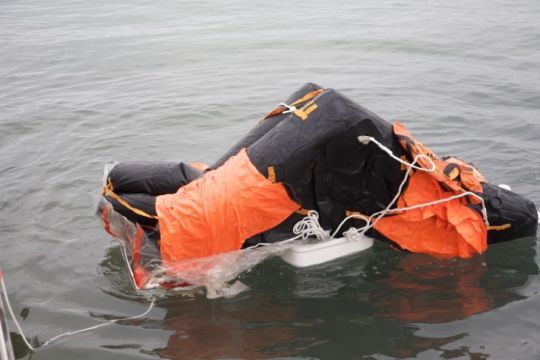
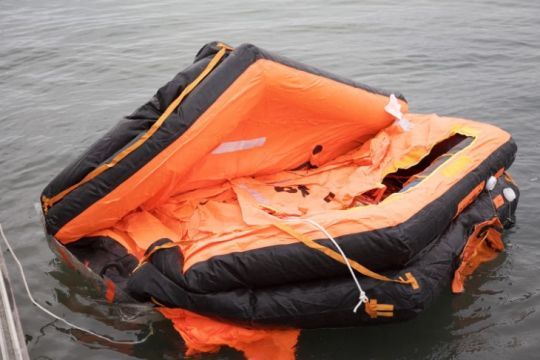
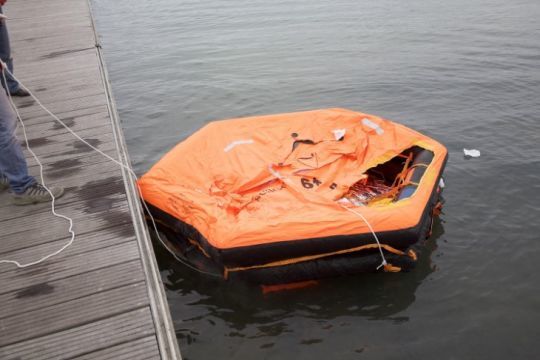
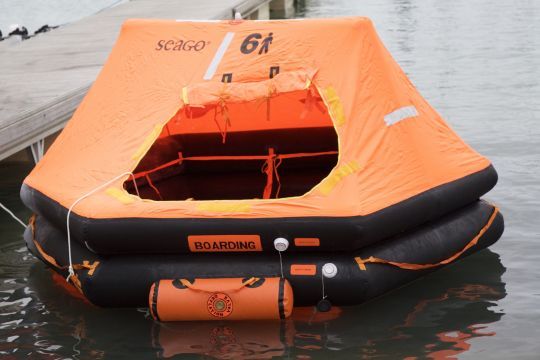
Dial your grab-bag
In addition to the basic survival equipment contained in the raft, it is advisable to carry, in a grab-bag you'll need a watertight pack, including everything you need for survival: a few extra parachute rockets, rations of dried food, a Katadyn Survivor-type manual watermaker, a portable VHF, a GPS, a headlamp, a compass, a satellite phone, a Leatherman-type multitool, warm clothing... Don't forget essential medicines for crew members (e.g. insulin for diabetics) and any eyeglasses you may need. This waterproof bag must be prepared and checked before setting out on any voyage.
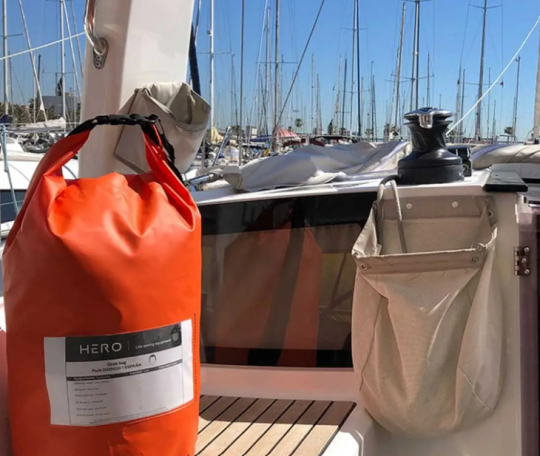
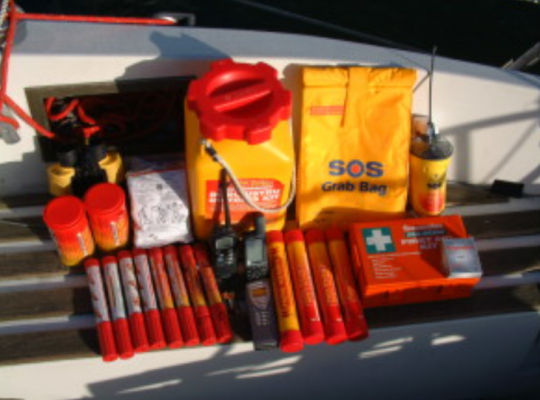
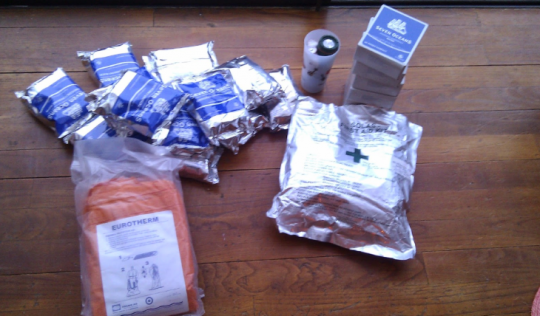
Some accounts of shipwrecked people, particularly in exotic areas, indicate the importance of taking along ship's papers, passports, credit cards and money for the administrative phase following the rescue. These should be packed in a watertight pouch at the start of the crossing.
It is advisable to choose an accessible place close to the descent to store the grab-ba g. It's always best to use airtight sub-packaging inside, such as sealed plastic bags or airtight boxes. Don't forget to stick reflective tape all over the packaging grab-bag and all moving objects, for maximum visibility.


